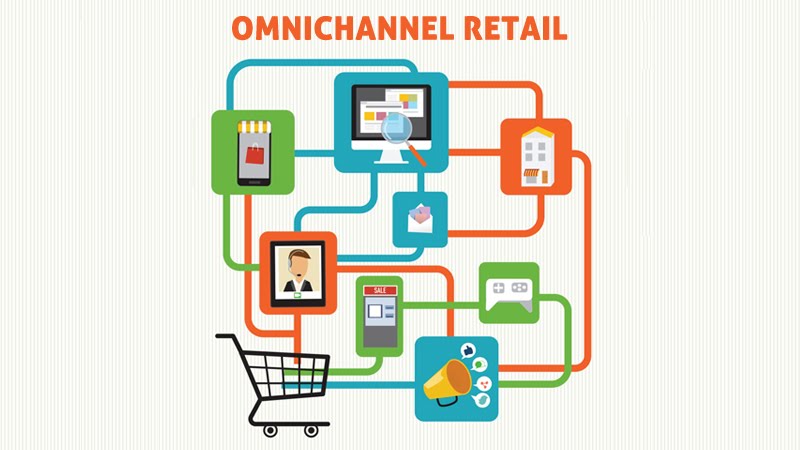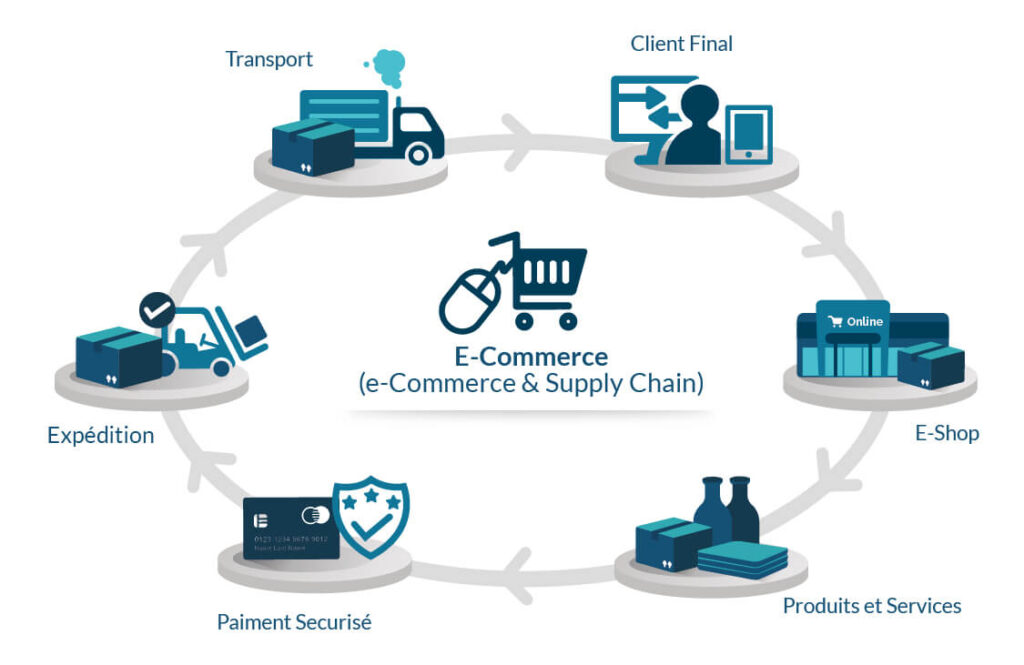
What does an omnichannel customer experience in e-commerce supply chain mean?
Omnichannel and E-commerce need supply chains that accelerate the movement of inventory through the entire supply chain to meet customer expectations which is the ultimate goal of the entire process. The eCommerce supply chain starts with the supplier and ends with the final consumer — the most important part of your supply chain. Here’s how the eCommerce supply chain works. Along the value chain, product flows from the supplier to the end consumer. Cash flows from the end consumer to the supplier, and information flows in both directions. The manufacturer converts the raw materials from the supplier to the finished product, which is transported to the warehouse, fulfillment centers and finally to the end consumer who placed an order. And all of the above activities happen along a single channel.

Some examples of this type of omichannel customer experiences are:
- Tata Starbucks – launched drive-through outlets and home deliveries to mitigate the economic impact of novel coronavirus. This joint venture between Tata and Starbucks worked on new business model to “thoughtfully expand” into areas with potential customers. Besides, it is also increased its focus on digital solutions like digital payments and transacting through mobile app. Tata Starbucks is planning to expand its e-commerce play as part of its omni channel retail strategy. The group is also using e-commerce for their gift cards. One of most convenient ways to engage with our customers is through home deliveries, which allows them to enjoy their favourite beverages and food from the safety of their own homes.

- At the center of the Amazon ecosystem (at least on the B2C side) lies Amazon Prime. The primary reason to invest in Amazon Prime is the promise of free (and increasingly fast) shipping. Convenience is the biggest key in introducing amazon prime.It eliminates the biggest reason for cart abandonment (shipping costs), and creates a lock-in effect. To Prime members, Amazon is the first, and often only, destination when shopping. Data unification is fundamental to a successful omnichannel strategy. It underpins Amazon’s ability to understand customer preferences, fuels their vaunted recommendations, and creates a seamless experience across devices.

• What is an omnichannel approach in e-commerce supply chain?
E-commerce has resulted in omnichannel marketing, in which customers engage with companies in a variety of ways—in a physical store and online via websites and mobile apps. There are numerous benefits such as increased supply chain visibility with optimized inventory, more fulfillment options to reach more customers, a seamless shopping experience with greater customer service, fewer returns, and more opportunities to engage customers and increase sales. “Omni” means that you must be present on the channels where your customers are. Your omnichannel retail and supply chain strategy must clearly set goals for what you want to accomplish, identify where your customers and prospects are, and determine your strengths, weaknesses, opportunities, and threats. Businesses need to deliver a cohesive and consistent brand experience across all sales and marketing channels to stay relevant, whether they’re accessed digitally, in brick-and-mortar locations, or both. It’s about connecting the dots across your digital and physical presence. That’s where an effective omnichannel strategy comes into play. For example Walmart, the worldwide leading retailer has deployed several omni-channel initiatives. It offers a pay-with-cash option which lets customers order merchandise online and pay with cash at its stores. This permits customers who do not own a credit or debit card to buy online, which boosts online traffic.
• What is e-commerce supply chain? What is the impact of omnichannel e-commerce on supply chains?
With ecommerce, primarily customers engage with the brand digitally via particular site or app, but secondarily with the delivery experience after purchase. As a result, availability, speed, and convenience equals brand experience. The supply chain now has an elevated role to customer loyalty and life-time-value. The supply chain also plays a strategic financial role. Ecommerce models will naturally require less capital expenditure in things like stores and employees, which mean both capital and operational expenses within the supply chain become a larger share of total cost.
Omnichannel e-Commerce is very positive solution for many companies, but the impact of omnichannel ecommerce on supply chains is often far greater than anticipated and requires effective solutions to be implemented throughout the supply chain. As more merchants switch to omnichannel ecommerce, the need for effective supply chain solutions that adjust to this model is highlighted. Mini-channel solutions provide customers with great flexibility for getting products delivered to their offices or homes from e-commerce sites. Customers have an option whether they want to complete online buying or to pick the item from the store itself. If the item is not present at the store, customers can order that item from their smartphone and wait until it is delivered. The main effect of rising delivery numbers exponentially to reduce the number of line items. The uncertainty of online ordering organizations boosts the assortment of items they stock for increasing the client demand. The supply center near the end-client is an option, warehouses ready for the containers’ delivery that streamlines the whole adjustment. Stores can get the supply from many different centers to fulfill the client’s need for fulfillment from various supply centers. Allow your business to predict demand, select the right magnitude of the workforce for the defined period. This also makes sure that your support crew, dealers, support crew, and customer-facing team are skilled in their processes for the convenience of your busy periods. Nurturing and making the relationships strong and lasting on the actual and accurate requirements and on-time delivery. Any warehouse management organization reduces the time spent on controlling catalog work, space management of products, team building, and permitting to emphasize preparation and practice optimization.

• What is value chain in e-Commerce and why is it important?
Outlining the entire process of business by creating new products and services is known as a value chain. The stages involved in moving a product from conceptualization to distribution, and just about everything in between, like obtaining raw materials, manufacturing operations, and marketing activities make up a value chain for an organization. The purpose of a value chain is to increase the value of a product at each stage before it is supplied to customers.
Value chains facilitate the analysis of all operations involved in the production of a product or service in e-Commerce. It also facilitates the identification of cost-cutting and differentiation. You can streamline efforts, remove waste, and boost profits by using a value chain. Further, it aids in getting appropriate insights of inner processes that can improve the end customer’s experience. An e-Commerce value chain is used to improve operational efficiencies such that a company may give the most value to its customers for the least amount of capital investment.
• Conclusion – How can an omnichannel approach help businesses’ supply chain management in the future
The world is in the early stages of a global supply chain revolution. The new supply chain will grow beyond omnichannel. It will cross into other industries and markets and will incorporate supply chains of products, information, and finance.
- The need for an omnichannel supply chain is here to stay. People expect the highest flexibility of companies.
- Costs are upfront for the omnichannel structure, but the ongoing cost of maintenance is higher for the multichannel structure.
- Almost all aspects of properly developed omnichannel supply chains have these two things in common: an all-encompassing, all-seeing IT-infrastructure and smart location planning (or even merging) for warehouses and distribution centers.
- An effective reverse logistics arrangement directly impacts customer satisfaction and sales figures.
- The right omnichannel platform can be a one-stop-shop for your e-retail needs.
While strategizing, make sure not to lose sight of the most important element, the whole focus should be on the purpose which is to know your customer. Keep it simple, make them feel valued, and the rest will follow.


